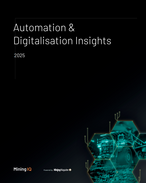The utilities, which comprise the Global Sustainable Electricity Partnership, produced a report Powering innovation for a sustainable future for consideration ahead of COP21.
The companies in the group currently have more than 540 gigawatts of installed capacity in all generation technologies (33% hydro, 18% nuclear, 17% each for coal and gas, and 5% other renewables).
The International Energy Agency estimates $US20 trillion in electricity technology investments will be needed between 2015 and 2040, and at present biomass’ share of global electricity generation is 2%, according to the group – yet electricity from biomass is the third largest contributor of renewable electricity globally after hydro and wind.
There are currently 95 gigawatts of global installed biomass capacity, with 430 terawatt hours’ worth of global production reached last year.
Electricity from biomass can be generated from a wide range of resources, which can be categorised into solid biomass (mainly forestry and agricultural products and residues), which accounts for 75% of biomass generation; wet biomass converted to biogas through methanation (18%); the renewable portion of incinerated waste (7%); and liquid biomass (1%).
While a number of technical processes for producing electricity from biomass have reached maturity, the main methods for solid biomass are combustion inside a dedicated boiler and co-combustion in thermal power plants.
Gasification, in which dry biomass is converted into a combustible gas, is still being developed.
As for wet biomass, methanation involving the conversion into biomethane of wet biomass by a biological process is the main solution in use.
To enhance efficiency and ensure competitiveness, electricity generation can be combined with the production of usable heat (cogeneration).
Small generation plants, while not benefiting from the economies of scale of larger facilities, allow low-cost local biomass, with short supply chains, to be used and thus avoid the sustainability challenges that come with larger resource requirements.
The group says, however, that smaller plants are more likely to find markets for heat as well as electricity, and therefore could use their resources optimally.
The group said there was further scope to both bring down production costs through modular replicable and scalable solutions, among other things.
“Biomass is pre-treated to create a fuel that is more compact and homogeneous, and therefore easier to burn,” the group said.
“Some pre-treatment processes are advanced, such as roasting, pyrolysis and biogas, while others are less mature, such as hydrothermal treatment.
“When properly treated, biomass can replace coal in coal-fired plants with only minor modifications to facilities, while untreated biomass can replace up to 15%.”
























